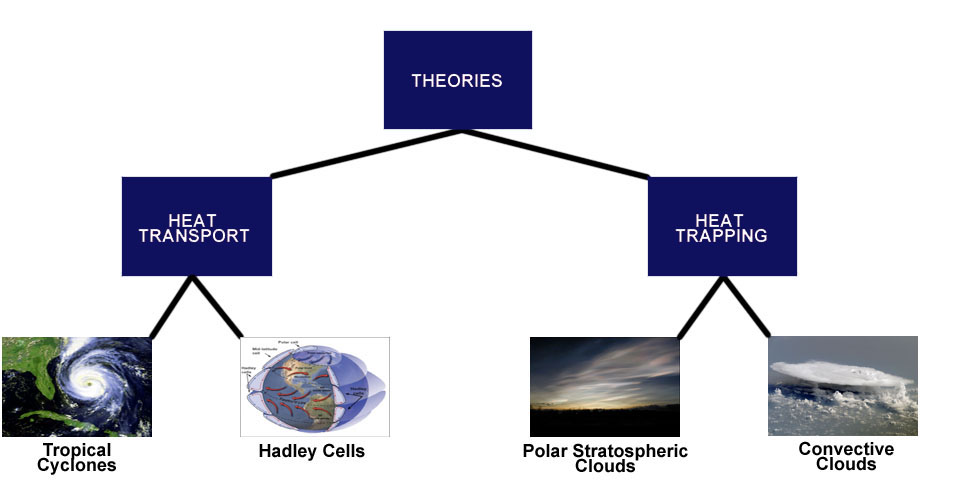Since changes in the atmospheric carbon dioxide (CO2) concentration are often correlated to fluxes in the climate, one might initially assume that a change in CO2 levels caused equable climates. However, an increase in CO2 would raise global temperatures everywhere, not just near the poles. This fact eliminates a change in the CO2 concentration as the sole explanation for equable climates and means that a more uncommon event must have triggered the Cretaceous' and the Eocene's equable climates.
Although they have discovered significant amounts of proxy data indicating that equable climates have existed in the past, scientists still are not sure why the climate changed. It is also unknown whether the instigating mechanism increased temperatures in the high-latitudes or decreased temperatures in the low-latitudes, but most scientists suspect that the mechanism warmed the high-latitudes. Despite these uncertainties, they do agree that the mechanism changed either the way heat was transported from the Tropics to the poles or the atmosphere's ability to absorb heat. The problem is that current computer models attempting to replicate the climate during these periods fail to provide similar results to the proxy data. If the proxy data is correct, this fact reveals that the models do not include an important feedback mechanism. To solve this problem, scientists have hypothesized about the potential causes for the transition to an equable climate, but they have not reached a consensus yet. Through the debate on the topic, four main theories have been developed with two focusing on transporting heat to the poles and two stressing the absorption of heat by the high-latitudes. The chart below outlines this division. Click on the boxes to learn more about the individual theories.

